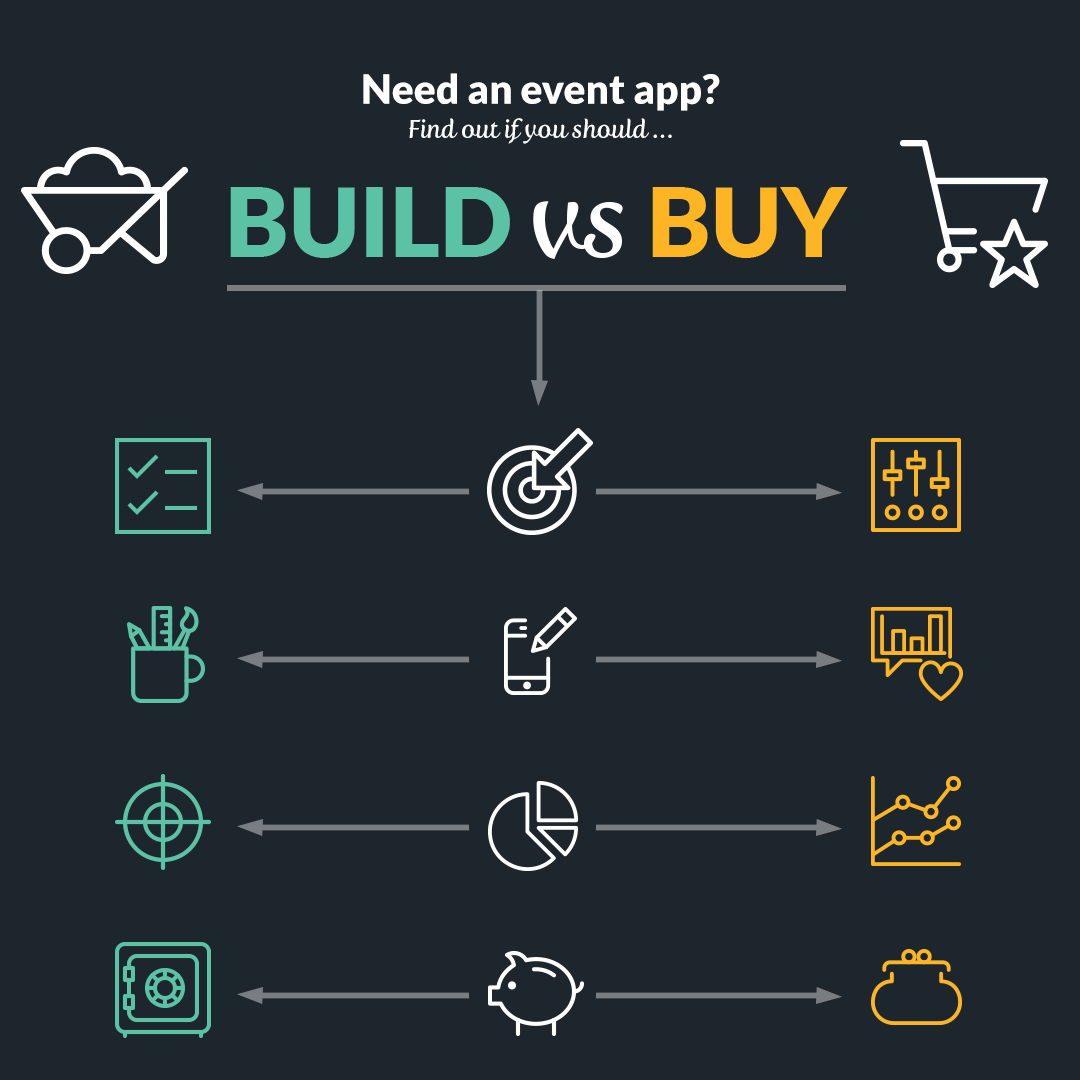Evaluating Event Success: What to Measure And When
Evaluating event success is the first step to take towards planning your next event. The planning process of this years’ event is where the evaluation process begins. Beyond the expectation of evaluation from your boss and stakeholders, understanding what worked, what didn’t, and where you can improve, builds the foundation for success and knowing what to measure against.
Where you are in your event cycle will play a factor on what metrics you want to measure. The table below shows the different event stages and highlights metrics for each.
Measurement for Different Event Stages
The planning and pre-event phase allow you to capture a number of quantitative data such as ticket sales or registration numbers whereas engagement metrics play an important role in every stage of the event lifecycle. Let’s take a closer look.
Evaluate Engagement
Engagement begins the moment you start to communicate with your audience, culminates onsite at the event and should continue post-event. The more opportunities you create for attendee engagement, the better your odds of engagement success. Remember, attendees want a personal experience, and what is considered engaging for one attendee may not excite another. The value they see in your event is directly derived from their level of engagement – with each other, your content and your brand.
Greater engagement benefits everyone and evaluating engagement should be a blend of the quantitative and qualitative data collected throughout the event life cycle. Engaged attendees are happy attendees. They typically rate an event higher on satisfaction surveys and are far more likely to attend each year. Engaged attendees are naturally more participatory. Their increased participation benefits not only the event organizer but other attendees, exhibitors and sponsors. Below are three pillars on how you can evaluate engagement.
One-to-One Conversations
Attendees typically place a high value on networking and it tends to be a primary driver for attending events. You can create pre-event networking opportunities through your event app’s chat feature. Monitor the number of conversations; is in-app networking taking place before, during and after the event? Take it a step further and watch the crowd at networking receptions, meet and greets, coffee breaks and open networking areas. Is there a buzz, a hum of conversation? If not, you must look at ways to create it. If they are networking in-app but not live, look at ways such as gamification to bridge the gap and get people talking live too.
Brand Activation and Social Shares
Brand activation is everywhere. When it comes to engagement at your event, identify if attendees share your brand or your exhibitor’s and sponsor’s brand. It’s important to evaluate your overall event engagement using social media data to understand engagement through likes, shares and downloads. It will be easy to see on the surface what attendees gravitate towards. Understanding whose brand(s) they are sharing can give insight into which exhibitors and sponsors are seeing success, but also who you should tap for sponsorship in the future. And, if they are not sharing your brand, you need to adjust your social media plan to create content worth sharing.
Participation
It goes without saying, an engaged attendee sees your event on a deeper level and, therefore participates more. These are your most valuable attendees; those who attend all the sessions (not just the mandatory ones), try out the demo areas, actively network at all functions, use gamification to enhance their experience, become ambassadors, visit more exhibitors and at the end of the day likely have conducted more business transactions than other attendees. Combine your social data with your other data points such as registration, gamification, in-app chat, lead retrieval and more to reveal who the most engaged attendees are.
EVENT PLANNER PRO TIP
Measure Engagement
Assign points for each action/engagement an attendee could have pre-event, during the event, and post event. You could rank your attendees and identify your top tier champions and target/incent mid-tiers for more engagement.
This exercise would also help you identify what you feel are the most important engagements you want your attendees to take – so you can focus your efforts on those areas. For example, if you want retweets on Twitter vs. likes, you can measure them differently and work to actively convert those actions.
Recommended Resource: If you’re deciding whether to buy an event app or build one from scratch, this handy comparison guide will help you weigh your options based on the necessary decision-making criteria, such as:
- What’s the cost of building internally vs. purchasing from a vendor?
- What’s required to ensure smooth onsite management of the event app?
- What event analytics are needed to evaluate the ROI?
- What are the goals for using an event app?
- What technical resources are required (and available) to build vs. buy?


